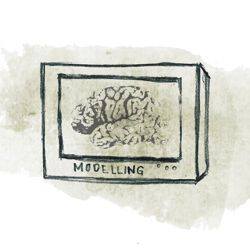Team:UCL/Modeling
From 2013.igem.org
(Difference between revisions)
| (15 intermediate revisions not shown) | |||
| Line 43: | Line 43: | ||
</div> | </div> | ||
| - | + | <div class="row_large"> | |
| - | + | <div class="col_left"> | |
| - | <p class="major_title"> | + | <p class="major_title">DRY LAB</p> |
| + | <p class="minor_title">Modelling The Treatment And Finding New Parts</p> | ||
| + | <p class="abstract_text" style="color:#404040;"> | ||
| + | Mathematical modelling provides a powerful tool for scientists of all disciplines, allowing inspection and manipulation of a system in ways which are unachievable in the lab. In the context of biology, we can use mathematical models to study the behaviour of a single cell or an entire ecosystem. In fact, inspecting a mathematical model is very much like a laboratory experiment – the main difference being that in modelling, the environment is artificial. <br><br> | ||
| + | </p> | ||
| + | <p class="abstract_text" style="color:#C14645;"> | ||
| + | Click the abstracts below to read more. | ||
| + | </p> | ||
| - | + | </div> | |
| - | < | + | <div class="col_right"> |
| - | + | <a href="https://static.igem.org/mediawiki/2013/f/f3/Twobrain.png" data-lightbox="image-1" title="UCL iGEM 2013"> | |
| - | + | <img src="https://static.igem.org/mediawiki/2013/f/f3/Twobrain.png"> | |
| - | + | </a> | |
| - | + | </div> | |
| - | </ | + | |
| - | + | ||
| - | + | ||
| - | + | ||
| - | + | ||
| - | + | ||
| - | + | ||
| - | + | </div> | |
| - | + | <div class="gap"> | |
| - | + | </div> | |
| - | + | <div class="row_small"> | |
| - | + | <div class="col_illustration"> | |
| - | + | <a href="https://static.igem.org/mediawiki/2013/a/aa/Modelling_pic.jpg" data-lightbox="image-1" title="Modelling Overview UCL iGEM 2013"> | |
| + | <img src="https://static.igem.org/mediawiki/2013/a/aa/Modelling_pic.jpg"> | ||
| + | </a> | ||
| + | </div> | ||
| + | |||
| + | <div class="col_abstract"> | ||
| + | <a href="https://2013.igem.org/Team:UCL/Modeling/Overview"> | ||
| + | <p class="abstract_title">Model Overview</p> | ||
| + | <p class="abstract_text"> | ||
| + | Mathematical modelling provides a powerful tool for scientists of all disciplines, allowing inspection and manipulation of a system in ways which are unachievable in the lab. In the context of biology, we can use mathematical models to study the behaviour of a single cell or an entire ecosystem. In fact, inspecting a mathematical model is very much like a laboratory experiment – the main difference being that in modelling, the environment is artificial. | ||
| + | </p> | ||
| + | </a> | ||
| + | </div> | ||
| - | + | </div> | |
| - | <a href="https:// | + | |
| - | + | <div class="gap"> | |
| - | + | </div> | |
| - | + | ||
| - | + | <div class="row_small"> | |
| + | |||
| + | <div class="col_illustration"> | ||
| + | <a href="https://static.igem.org/mediawiki/2013/e/e7/Display_small.png" data-lightbox="image-1" > | ||
| + | <img src="https://static.igem.org/mediawiki/2013/e/e7/Display_small.png"> | ||
</a> | </a> | ||
| - | + | </div> | |
| + | |||
| + | <div class="col_abstract"> | ||
| + | <a href="https://2013.igem.org/Team:UCL/Modeling/Two"> | ||
| + | <p class="abstract_title">Simulation Results</p> | ||
| + | <p class="abstract_text"> | ||
| + | For all the complex calculations and mechanisms behind a model, it is without much worth if it cannot produce useful results. In general, 'useful results' are defined as successful predictions about the effects of modifying some parameter - if we can use a model to determine the effect of each variable upon the outcome, we can better design our system in the real world. | ||
| + | </p> | ||
| + | </a> | ||
| + | </div> | ||
| + | </div> | ||
| + | |||
| + | <div class="gap"> | ||
| + | </div> | ||
| + | |||
| + | <div class="row_small"> | ||
| + | |||
| + | <div class="col_illustration"> | ||
| + | <a href="https://static.igem.org/mediawiki/2013/6/69/University_of_Westminster.png" data-lightbox="image-1" > | ||
| + | <img src="https://static.igem.org/mediawiki/2013/6/69/University_of_Westminster.png"> | ||
| + | </a> | ||
| + | </div> | ||
| + | |||
| + | <div class="col_abstract"> | ||
| + | <a href="https://2013.igem.org/Team:UCL/Modeling/Westminster"> | ||
| + | <p class="abstract_title">Westminster collaboration</p> | ||
| + | <p class="abstract_text"> | ||
| + | Since Westminster's iGEM team had not produced a model of their own, and their project has several similarities to ours, we have constructed an additional model, also in C#, and sent this to Westminster's team for them to use. The model simulates bed bugs moving randomly in a cubic room. One of their proposed "blood traps" is integrated into the simulation, which visually demonstrates bed bugs being attracted and then subsequently killed by the device. | ||
| + | </p> | ||
| + | </a> | ||
| + | </div> | ||
| - | + | </div> | |
| - | + | <div class="gap"> | |
| - | + | </div> | |
| Line 93: | Line 139: | ||
<div class="row_small"> | <div class="row_small"> | ||
| - | + | <div class="col_illustration"> | |
| - | + | <a href="https://static.igem.org/mediawiki/2013/8/89/BioInformatics.gif" data-lightbox="image-1" title="Bioinformatics Co-alteration Searching Algorithm UCL iGEM 2013"> | |
| + | <img src="https://static.igem.org/mediawiki/2013/8/89/BioInformatics.gif"> | ||
| + | </a> | ||
| + | </div> | ||
<div class="col_abstract"> | <div class="col_abstract"> | ||
| - | <a href="https://2013.igem.org/Team:UCL/ | + | <a href="https://2013.igem.org/Team:UCL/Modeling/Bioinformatics"> |
<p class="abstract_title">Bioinformatics</p> | <p class="abstract_title">Bioinformatics</p> | ||
| - | <p class="abstract_text"> | + | <p class="abstract_text">Using bioinformatics we can identify key genes whose dysfunction drives disease states. In so doing, we are should be able to come up with new parts that target these dysfunctional genes to increase the efficacy of synthetic biological constructs. |
</p> | </p> | ||
</a> | </a> | ||
Latest revision as of 03:56, 5 October 2013
DRY LAB
Modelling The Treatment And Finding New Parts
Mathematical modelling provides a powerful tool for scientists of all disciplines, allowing inspection and manipulation of a system in ways which are unachievable in the lab. In the context of biology, we can use mathematical models to study the behaviour of a single cell or an entire ecosystem. In fact, inspecting a mathematical model is very much like a laboratory experiment – the main difference being that in modelling, the environment is artificial.
Click the abstracts below to read more.
 "
"




